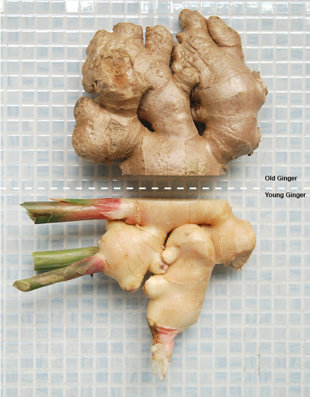
Be like Ginger, the model citizen
By Sheere Ng - Tuesday, Oct 09, 2012
The government says we have to work as long as we live, be productive and adaptable to the changing needs of the country and the world. Makansutra finds a model citizen, in the spice world.
Age doesn’t matter
The older it gets, the more useful it becomes. Old ginger, harvested in its 10th month, is pungent, spicy and invigorating. The Chinese juliennes it and uses it to mask fishiness in seafood, stir-fry meats and vegetables, and add in soups; the Malays and Indians blends it to intensify the flavours of curried dishes, marinate meats and to make chutneys.
Young ginger, harvested early in the fourth month, has less confrontational pungent and spicy notes. It is used to make pickles, which is served between dishes of sushi to cleanse the palate.

A global ingredient
Ginger, grown in China and India since ancient times, and believed to be taken to Europe by Arab traders during the spice trade days, is probably the first “global citizen”, even before there was such a term. In every of its home and adopted country, it “gave back” by turning the local drinks into internationally popular beverages – Southeast Asia’s teh halia, India’s masala chia, China’s brown sugar ginger tea, and European’s ginger ale and ginger beer.
Highly adaptable
Despite its distinctive spicy zing with citrusy hints, ginger is a choice ingredient across a meal. For salads – ginger and sesame dressing, main dishes – Hyderabadi ginger chicken, desserts – ginger milk curd, snacks – ginger bread and biscuits, sweets – candied ginger, and drinks – as mentioned above.
Multihypenate
It is food, as well as medicine, killing two birds with one stone. Jamu (Indonesian Traditional Medicine), Traditional Chinese Medicine and Ayurveda (health system originated in India) believe that it helps dispel wind, relief nausea and cold. It is also
believed to possess aphrodisiac qualities and even Karma Sutra praises its ability to bring success in “love”.
Now, who can beat ginger in productivity?
To read more about ginger, check out these books: Ginger (Publisher: Yi Zi Sen Ling, Author: Su Jing, 2008), The Ginger Garden (Publisher: National Parks Board Singapore Botanic Gardens, 2010)


